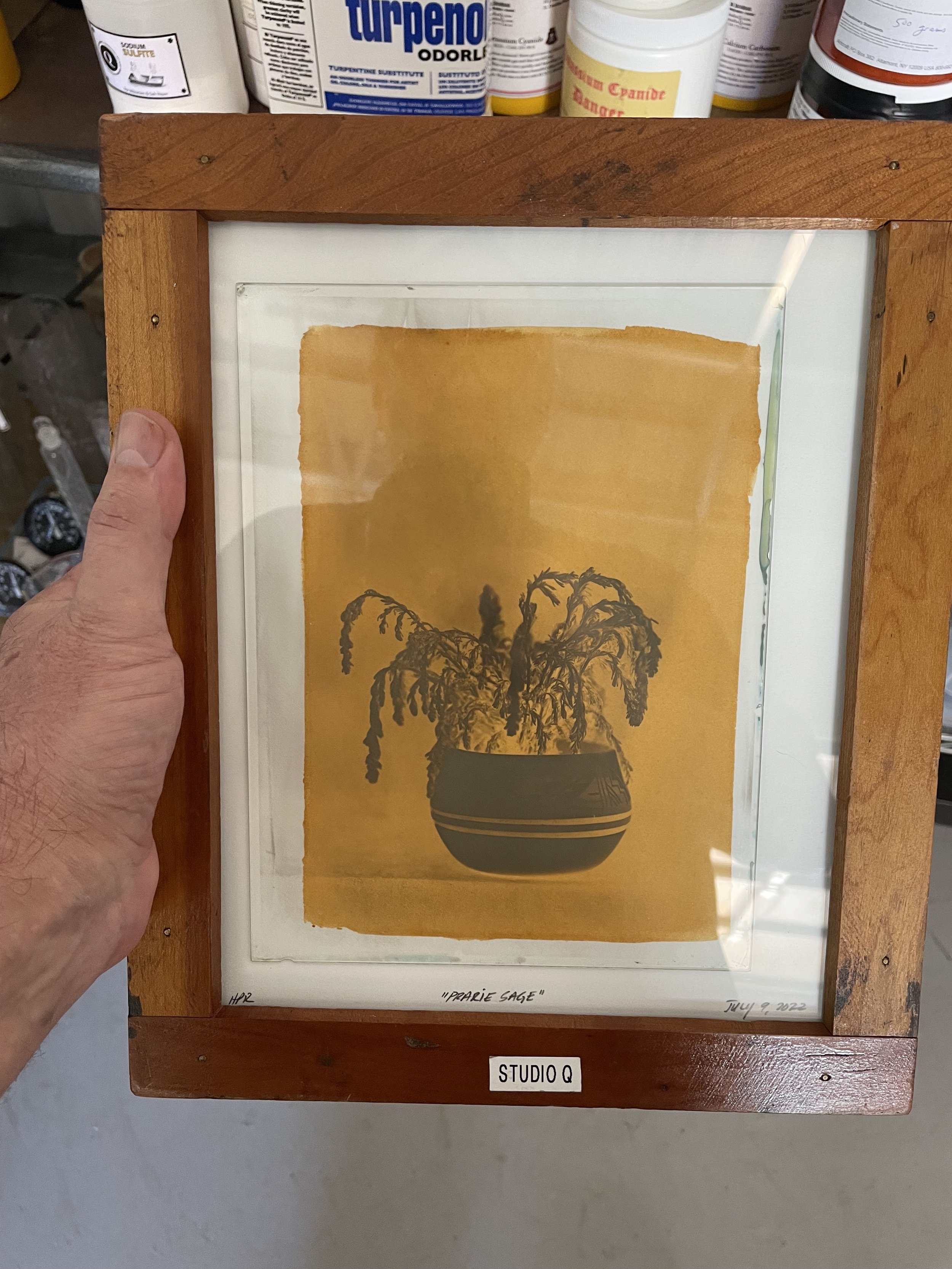It was a good day in the studio today. I discover new plants to photograph almost every day. These are just preliminary prints, but I feel terrific where this has gone. I suppose I could do an entire body of work on these plants. I like diversity when I look at a body of work, the landscapes, rock formations, and the trees I’ve made plates of really add dimension - they make the story whole. I’m starting to look at the images together, as a body of work. I can say that I’m on the right track for what I want to accomplish.
I’m going to spend a few hours tomorrow preparing some collodion dry plates. On our walk today, Jeanne and I discovered a beautiful little scene I want to photograph. I think I’ll squeeze that image in between the flora work. I’ve mentioned a few times that some landscape here seems other-worldly. If I get this right, it will really echo that statement.
BEAR-GRASS YUCCA
Native Americans have long used Bear-grass for a variety of purposes. Leaves were used for basket weaving, leaf fibers for clothing, and rhizomes roasted for food. Eastern prairie tribes boiled the roots for a hair tonic and the treatment for sprains. Elk and deer forage on the flower stalks.
PRAIRIE SAGE
Prairie Sage has a rich history of utilization by Native American tribes. Uses range from preservatives for meat, horse feed, insect repellent (through the burning of the plant), medicinal decoctions to alleviate toothache, headache, coughing, lung ailments, heartburn, and as a cold remedy.
Opps! I need another “i” in Prairie Sage! ;-)
The Prairie Sage plate getting ready to become a Palladium Platinum print!
The Bear-Grass Yucca on a Palladium Platinum sensitized paper - this is HPR paper. I think this is my favorite paper for this process.
The Prairie Sage negative right after fixing.
Bra-Grass Yucca - digital snap.






